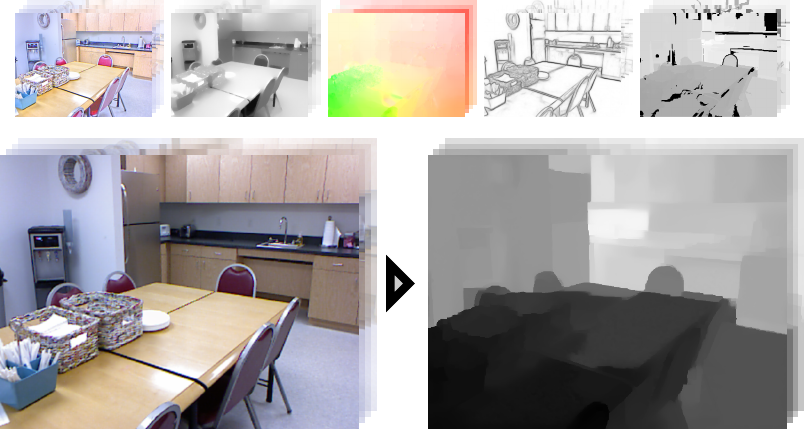Human Pose, Shape and Action
3D Pose from Images
2D Pose from Images
Beyond Motion Capture
Action and Behavior
Body Perception
Body Applications
Pose and Motion Priors
Clothing Models (2011-2015)
Reflectance Filtering
Learning on Manifolds
Markerless Animal Motion Capture
Multi-Camera Capture
2D Pose from Optical Flow
Body Perception
Neural Prosthetics and Decoding
Part-based Body Models
Intrinsic Depth
Lie Bodies
Layers, Time and Segmentation
Understanding Action Recognition (JHMDB)
Intrinsic Video
Intrinsic Images
Action Recognition with Tracking
Neural Control of Grasping
Flowing Puppets
Faces
Deformable Structures
Model-based Anthropometry
Modeling 3D Human Breathing
Optical flow in the LGN
FlowCap
Smooth Loops from Unconstrained Video
PCA Flow
Efficient and Scalable Inference
Motion Blur in Layers
Facade Segmentation
Smooth Metric Learning
Robust PCA
3D Recognition
Object Detection
Intrinsic Depth

We formulate the estimation of dense depth maps from video sequences as a problem of intrinsic image estimation. Our approach synergistically integrates the estimation of multiple intrinsic images including depth, albedo, shading, optical flow, and surface contours. We build upon an example-based framework for depth estimation that uses label transfer from a database of RGB and depth pairs. We combine this with a method that extracts consistent albedo and shading from video. In contrast to raw RGB values, albedo and shading provide a richer, more physical, foundation for depth transfer. Additionally we train a new contour detector to predict surface boundaries from albedo, shading, and pixel values and use this to improve the estimation of depth boundaries. We also integrate sparse structure from motion with our method to improve the metric accuracy of the estimated depth maps. We evaluate our Intrinsic Depth method quantitatively by estimating depth from videos in the NYU RGB-D and SUN3D datasets. We find that combining the estimation of multiple intrinsic images improves depth estimation relative to the baseline method.
Members
Publications

